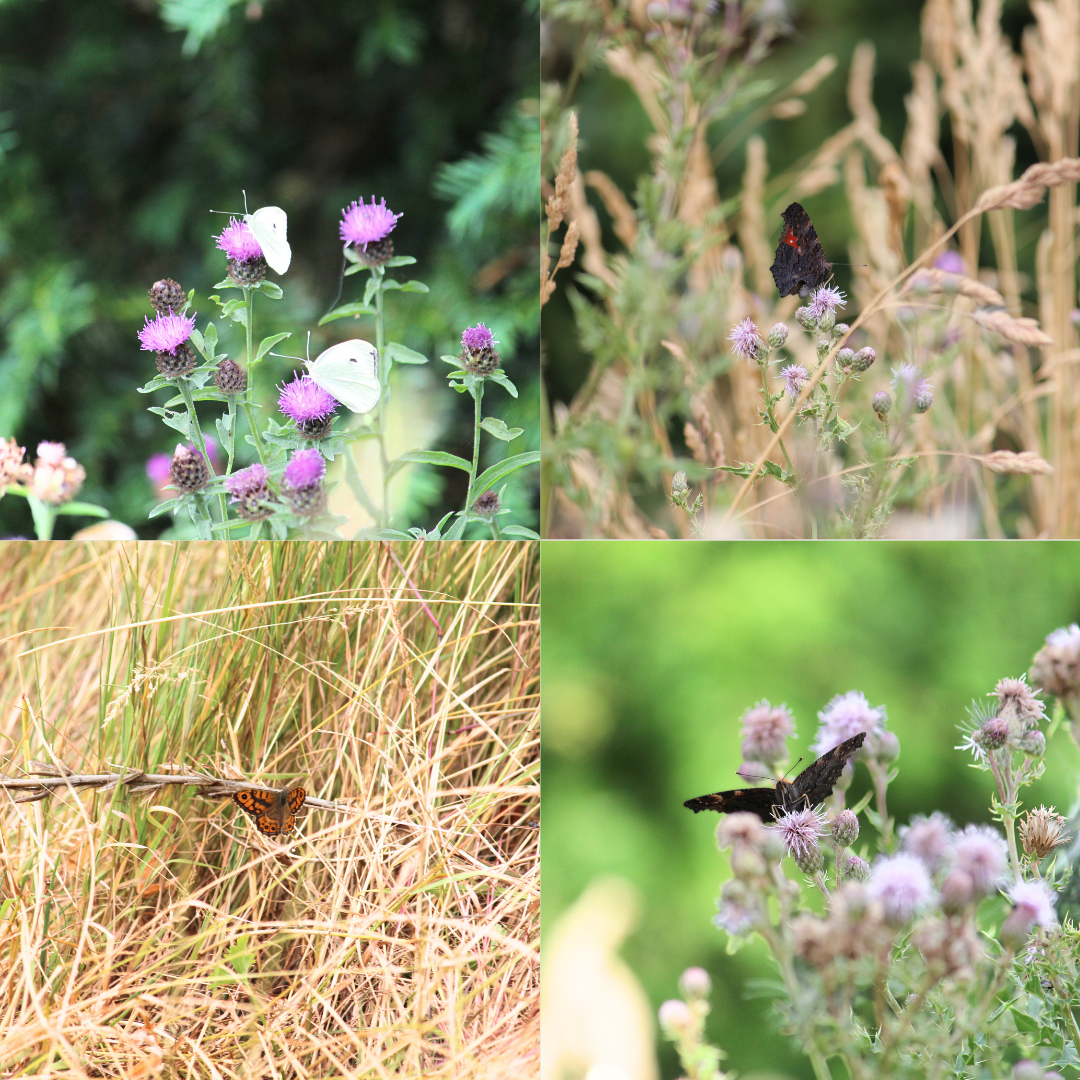 Butterflies
Butterflies
The butterflies have been wonderful in those churchyards which have established a good summer flower area. Butterflies are not only beautiful but good pollinators. Please try to find 15 minutes to take part in the Big Butterfly Count, running until Sunday 10 August, to help monitor numbers across the country. It is organised by the charity Butterfly Conservation, which would love to have your sightings. bigbutterflycount.butterfly-conservation.org
Burial grounds and churchyards can offer a haven to butterflies and moths (plus a host of other insects such as shield bugs, beetles, ladybirds and grasshoppers). Butterflies feed primarily on the nectar of flowers and lay their eggs on many different plants and trees, which then provide food for growing caterpillars.
LONG GRASS AREAS... remember that some butterflies and caterpillars overwinter so shelter, such as thick growths of ivy and patches of long and tussocky grass, is important for their survival. A variety of different lengths of grass is best and it is important not to cut some areas of tussocky grass at all because the butterflies and other insects, which lay eggs on grass stems, will be destroyed. Many butterfly species need long grass all through the year to complete their life cycle.
LOOK OUT FOR... Holly Blue – a classic butterfly of burial grounds as its main food plants are holly and ivy. The holly blue has two broods and eggs are laid on unopened flowers. The first brood feeds on developing berries or young leaves of holly. The second brood is laid on ivy and feeds upon its developing berries in the autumn. Holly Blue is unique among British butterflies for having alternating food plants for caterpillars. Shrubs and hedges are good for butterflies too, such as the Six-spot Burnet Moth.
NETTLES... with vigorous growth, in full sun and sheltered from the wind, these are important plants for butterflies, providing food for the caterpillars of comma, painted lady, peacock, red admiral, small tortoiseshell, golden Y moth, burnished brass moth, green carpet moth and spectacle moth. Also, seed eating birds feed on nettle flowers in autumn.
WILDFLOWERS... butterflies feed on a variety of flowers such as knapweed, buttercup, clover, bugle cowslip, bird’s-foot trefoil, garlic mustard, hawkweed, ox-eye daisy, primrose, thistles, dandelion, lady’s bedstraw, vetches, to name just a few. These plants will have evolved over time with British insects as pollinators.
CUTTING GRASSLAND... at the right time is critical to the well-being of the butterflies and the wildflowers. The summer flower area should not be cut between April and the end of July/August. You could even leave some 'late cut' areas if flowers and butterflies are still visible
IDENTIFICATION... butterflies can be identified quite easily. The charity Butterfly Conservation have devised a churchyard survey with a recording and identifying sheet.
Enjoy the rest of the summer everyone and please keep in touch with your progress. Photos of butterflies in the churchyard gratefully received.
Finally, congratulations to St Andrew's in Histon for achieving the Bronze Churchyard Conservation Award this week.
Diana Cook, Volunteer Co-ordinator, Cambridgeshire Churchyard Conservation Award
